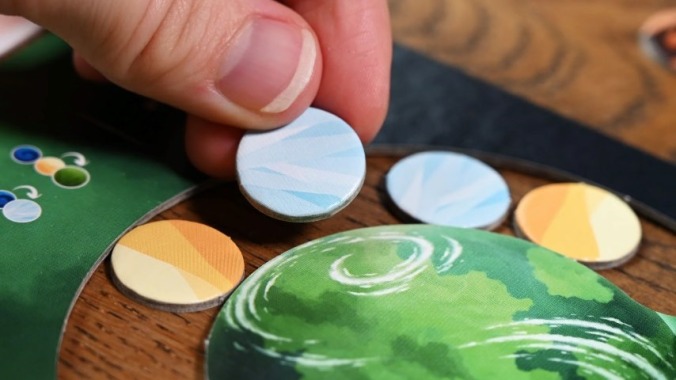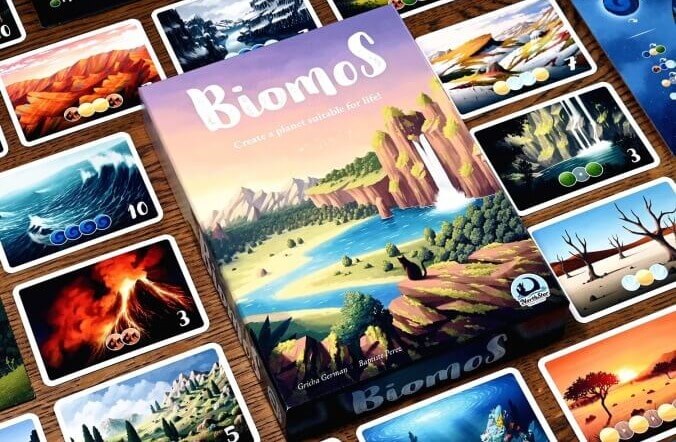So Random: Board Game Biomos Relies Too Much on Luck

Biomos is a small-box filler game with a puzzly aspect where you’re trying to build your planet’s ecosystem with marbles that represent different terrain types. It’s quick to learn and solid for family play but ultimately has too much randomness in it to be more than that.
Your player board in Biomos has a curved track into which you’ll place the marbles you draw over the course of each game. At the start of each round, you draw five random terrain marbles from the bag to set up the supply, regardless of the player count. The start player for the round takes one marble and places it into the track on their personal board, at either end of their current line of marbles or even somewhere in the middle of the line. They may then claim an objective card if they match the pattern shown, gaining anywhere from two to 10 victory points.
The exception to these rules is the Moon action, which each player may use once per game. Instead of placing the chosen terrain marble on your track, you can place it in the empty Moon space on your board. You’ll get three bonus points at game end for every marble in your track that matches the color of the one you placed in the Moon space. When taking this action, you may also remove one marble from your board and place it somewhere else along the track, which is the only time you can move a marble you’ve already placed.
The objective cards provide the bulk of the points in the game, and they come in two flavors. At the start of each game, you draw four Giant Biome cards from the deck of 10 and lay them out on the table; they’re worth 10 points each and require that you place four marbles of the same color in a certain pattern. Once one player validates one of these Giant Biome cards, they take it and it isn’t replaced—the four that you get to start the game are all you get. You also start the game with four Basic Biome cards that are easier to complete and worth two to seven points; these cards are replaced whenever a player takes one. You can only validate one Biome card per turn, even if you can complete several of them, which also means that you can’t validate the one drawn to replace the one you just completed.
